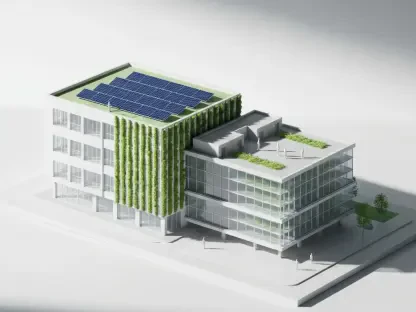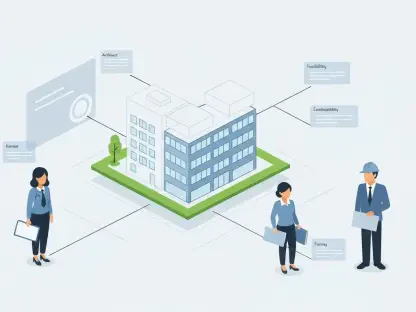Property management has long been grounded in traditional processes and systems, but that narrative is rapidly changing with the infusion of technology. While many business owners recognize the need for tech adoption, the challenge lies in implementing it effectively. Too often, property managers either resist change or implement technology haphazardly, leading to wasted time, resources, and frustration. The key to success isn’t just adopting new tools and technology—it’s integrating them strategically into the business to enhance efficiency, improve client service, and create a seamless experience. This guide provides a step-by-step framework to help navigate the process, ensuring that tech-powered transformation is intentional, structured, and profitable.
Whether a business is just beginning its digital journey or refining an existing system, these steps will assist with leveraging technology with a focus on automated workflows and AI, to drive long-term success, relevance, regularity, oversight, viability, and profitability within the property management business.
1. Evaluate Your Current Procedures
Before diving into new technology, it’s important to understand where your business currently stands. Many property management businesses struggle with inefficiencies, manual processes, and outdated systems that slow down operations and reduce profitability. Conducting an internal audit is the first step in identifying areas where technology can make the biggest impact. Start by mapping out your existing workflows—prioritize and work on one workflow at a time. Where are the bottlenecks? Which tasks are consuming excessive time? What do clients and tenants frequently complain about? What does the team complain about and end every question with an “and why?”
By answering these questions, pinpointing gaps that technology can fill are identified. For example, if maintenance requests are often delayed due to manual coordination, an automated maintenance tracking system may be a game-changer. However, dig deeper to review what part of the process can be driven by AI and at what point does a property manager need to step in. Here’s a clue: with current advances in technology, most service issues and repairs can be managed through AI. Imagine the time and cost saving a business can make on this process alone.
2. Set Your Goals
Once processes have been assessed, the next step is to define clear technology implementation objectives. Many businesses fall into the trap of adopting tech without a clear purpose, leading to unnecessary expenses and underutilized tools, as well as the dreaded team pushback and justification for non-use. The key is to align technology with your business goals and client needs. The team is built around these two identifiers. Ask yourself: What do you want to achieve with technology? Are you looking to streamline operational and administrative tasks, enhance owner and tenant communication, automate compliance, or improve financial oversight?
These objectives should be specific and measurable. For instance, if reducing tenancy renewal processing time is a priority, investing in automated workflows and digital documentation will directly address that goal. The key is ‘automated workflows.’ Defining business objectives also helps with budgeting and tech selection. Without a clear direction, purchasing software that doesn’t integrate well with existing systems or doesn’t provide the functionality truly needed will most likely be the result. By establishing focused goals, every tech investment contributes to efficiency, profitability, and long-term business growth.
3. Select the Appropriate Technology Stack
Technology should be an enabler, not a complication. With the overwhelming number of property management tech available, selecting the right technology stack requires a strategic approach. A well-integrated system can streamline operations, reduce errors, and improve service delivery, while a poor choice can lead to inefficiencies and frustration as well as unnecessary cost and potential business loss. The technology stack should include tools that address key business functions. Property management software (PMS) is essential for managing past, present, and future data on every property and every client, as well as managing accounting requirements.
AI-driven automation tools can enhance client communication and reduce administrative workload. Tenant and client portals improve transparency and self-service options. IoT solutions, such as smart locks and predictive maintenance tools, can enhance security and operational efficiency. The most important factor when selecting technology is integration. Tools should work seamlessly together to prevent data silos and duplicated efforts. Prioritize solutions that enhance, rather than complicate, your existing operations. By choosing the right stack, you set the foundation for a streamlined, tech-powered property management business. And don’t be lulled into a false sense of saving. Tech is specialized. The PMS specializes in data and accounting. It does not specialize in inspections, maintenance, workflows, and AI.
4. Engage the Team Early
One of the biggest challenges in tech adoption isn’t the technology itself—it’s getting the team on board and engaged. Resistance to change is natural, especially in industries like property management, where traditional processes have been deeply ingrained. To ensure a smooth transition, the team must understand why the change is happening and how it benefits them. Start by involving key team members in the selection and implementation process. When employees feel heard and engaged, they are more likely to embrace the new technology. Provide clear communication about the objectives, emphasizing how technology will make their jobs easier rather than replacing them.
For example, automating lease renewals frees up property managers to focus on higher-value tasks like client relations and business growth. Training is also crucial. Even the most intuitive tools require proper onboarding to maximize their effectiveness. Invest in training sessions, provide ongoing support, and encourage feedback to ensure successful adoption. A well-prepared team is the key to a successful tech-powered transition. Lead with courage and confidence. There will be pushback, excuses, and justification. Trust your research and do not let team influence your progress and implementation.
5. Implement in Phases
Trying to overhaul the entire business with new technology in one go is a recipe for disaster. A phased implementation strategy allows testing, refinement, and scaling technology adoption without overwhelming the team or clients. Start with quick wins—small but impactful changes that immediately improve efficiency. For instance, introducing one automated workflow, tenancy renewals are a good start. Once the team gets used to the rhythm of step assignment and time requirements, the team is ready for the next workflow to be introduced. As the team and clients are comfortable, a gradual and purposeful rollout of more complex systems, such as AI-driven chat support, inspection automation, and predictive maintenance technology.
Testing is key at every stage. Monitor how the new technology integrates with existing operations, collect feedback, and make necessary adjustments. Scaling and adjustments should only happen when a system works effectively and delivers real value. Team feedback is used to understand if further training or attitude adjustment is necessary. Remember, specialized technology works, if it’s not working, it’s most likely human error. A phased approach ensures a smoother transition and higher adoption rates across your business.
6. Monitor, Measure, and Optimize
Implementing technology isn’t a one-and-done process—it requires continuous monitoring and optimization to ensure long-term success. Many property management businesses adopt technology but fail to track its effectiveness, leading to stagnation and underutilization. Define clear KPIs (Key Performance Indicators) to measure the impact of the tech investment. Are administrative tasks being completed faster? Have client satisfaction scores improved? Are maintenance requests being resolved more efficiently? Regularly assessing performance will identify areas for improvement and fine-tune processes.
Gather feedback from both team and clients to understand how technology is being received and where adjustments are needed. Stay updated on industry advancements to ensure systems remain competitive and relevant. Optimization isn’t just about keeping up—it’s about continuously improving and ensuring that your business remains at the forefront of tech-powered property management.
7. Process is Created from Policy and Promise
Technology-driven processes must be reinforced by strong policies and a clear promise to clients. A well-defined policy framework ensures consistency, accountability, and compliance, while a strong service promise builds trust and sets expectations. Policies should outline how technology is used in your business—from client interactions to task tracking, financial management, and data security. Clear guidelines prevent inconsistencies and ensure that automation enhances service delivery rather than replacing the human touch. Meanwhile, the promise to clients should reflect how technology improves their experience—whether it’s faster response times, greater transparency, or streamlined communication.
When policies and promises align, technology becomes a tool for delivering exceptional service rather than just a backend system. This alignment ensures that every tech-driven process reinforces your company’s mission, setting you apart in a competitive market.
Future-proofing Your Business
Technology has been reshaping property management, and those who fail to adapt risk being left behind, irrelevant, and unprofitable. However, successful tech adoption isn’t about jumping on the latest trends—it’s about making strategic decisions that enhance efficiency, improve service, and future-proof your business. Don’t see tech as a cost, team is your biggest cost. Both must work side-by-side and fully intertwined to ensure business viability.
By following this step-by-step guide, you can ensure that your transition to tech-powered property management is seamless and effective. From assessing your current processes to selecting the right tools and involving your team, every stage plays a crucial role in long-term success. The property management businesses that thrive in the future will be those that embrace technology not as a replacement for people but as a powerful tool that empowers teams, enhances client experiences, and drives sustainable growth. The time to act is now—start your tech-powered transformation today. “Tech keeps your business hummin’ and team keep your business human.” (quote Jo Oliveri)









